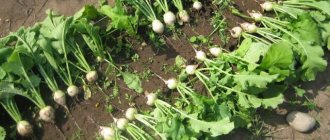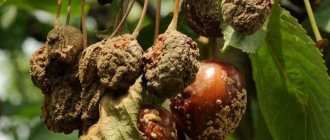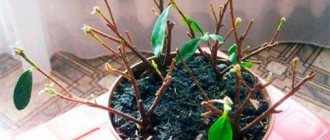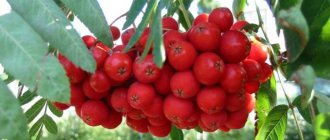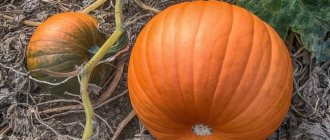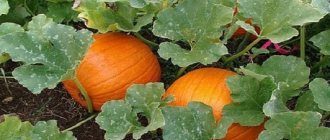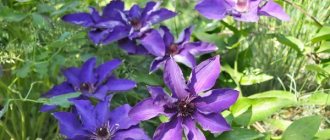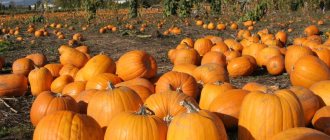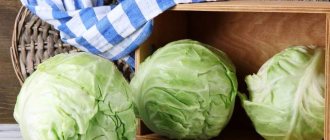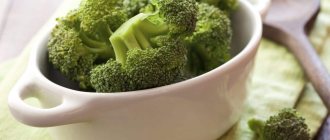How to tell if a pumpkin is ripe and how to properly remove it from the garden. The main signs of pumpkin ripeness! Buyanov Oleg
Ryabikova Boulevard, 50 Irkutsk Russia 664043
+7
Date: October 14, 2021 ||
Category: Country life and vegetable garden
||
Hello, friends. I love the orange beauty, and that’s why today there’s another article about her. In it I will tell you how to find out that it is ripe and can already be collected. You will learn the main signs that a pumpkin is ready for harvest and how to remove it from the garden. And what to do to make the pumpkin ripen.
Harvesting at the end of the summer season is the culmination of all garden work completed. After growing the orange beauty, for many gardeners the most important moment comes - harvesting the fruits.
Ripe pumpkin is one of the last to be harvested from a summer cottage, as it is an unpretentious and cold-resistant crop.
Many gardeners cannot decide for a long time to pick up the orange fruit from the garden, postponing this procedure. How do you know when a pumpkin is ripe and how to properly remove it?
Harvesting according to ripening period.
The ripening time of a vegetable directly depends on its variety. In the Moscow region, the varieties of vegetables most often planted are early-ripening, mid-ripening and late-ripening.
- In the Moscow region, it is recommended to plant varieties such as “Vesnushka”, “Gribovskaya Kustovaya”, “Almond 35”. Most often, gardeners prefer to plant early-ripening varieties of pumpkin, which are harvested 75 days after planting the seeds in the ground.
- The first, early-ripening crops are harvested in mid-August, when the weather is warm and frost is still far away. Their ripening period is no more than 105 days.
- Then they begin to collect medium and hard varieties in September.
Fruits with a thick shell can be stored for several months, but early varieties will have to be eaten soon after harvesting.
Signs of ripening of some types of pumpkin
Some types and varieties of pumpkin, in addition to the general ones, also have additional characteristics. In particular, in many varieties of nutmeg pumpkin, towards the end of the ripening period, the color changes towards brown with the accompanying appearance of light spots. Some golden varieties develop light yellow stripes on the skin. The pattern present in the coloring of some pumpkins becomes more distinct.
Some varieties of pumpkins can ripen during storage. But if you have already cut the vegetable, pay attention to the pulp (in a ripe pumpkin it should be soft) and seeds (their shell should be hardened). Remember that before the onset of the first, even slight frosts, the entire harvest of pumpkins, even late ones, must be harvested. If necessary, the ripening of large vegetables can be accelerated by removing small specimens, as well as flowers and shoots.
Depending on the weather conditions of the region.
The weather conditions of the region also influence the ripening time of vegetables. In the south, the fruits lie in the garden for a long time, but in the middle zone they must certainly be collected before frost sets in.
It is also necessary to navigate the frosts. In areas such as the Urals and Moscow region, frozen vegetables cannot be stored. They are immediately used for making juices or canned.
If the weather is not stable, cut the vegetables in early September and leave them to ripen at home. On sunny days they must be taken out into the fresh air.
In Siberia, the best time to harvest is in early and mid-September, when beets and carrots and other root vegetables are harvested. And even in our region, you can achieve large and even huge fruits, the main thing is proper care and nutrition with microelements.
Inspect the peel
The pumpkin pulp is protected by a shell. It is formed as soon as the flowering period passes and the ovary begins to develop. At first the peel is thin, green or milky in color.
As the fruit ripens, the shell changes its structure and shade. In order to start preparing vegetables for harvest on time, you need to learn how to determine the ripeness of a pumpkin in the garden?
Pay attention to the thickness of the peel. If vegetables belong to the large-fruited or hard-barked group, then their protective shell becomes thick and woody.
If you press on it, the condition of the peel will not change. Some plant growers rub the surface with a sharp object or fingernail. An unripe pumpkin leaves a mark on its shell.
Not all vegetables can be checked for ripeness using similar methods. The fruits of the nutmeg variety have a thick but elastic peel. If you press on it, there will be no mark left, but a cut will appear after a knife or nail. The protective shell of the nutmeg variety of vegetables is better separated from the pulp. It's easier to cut it apart.
You can determine the ripeness of a pumpkin in the garden by the color of its skin. In this case, it is necessary to correctly study the characteristics of the variety. The shell may remain green, like fruits of milky ripeness, or acquire a grayish or orange tint.
View this post on Instagram
Publication from Dom
